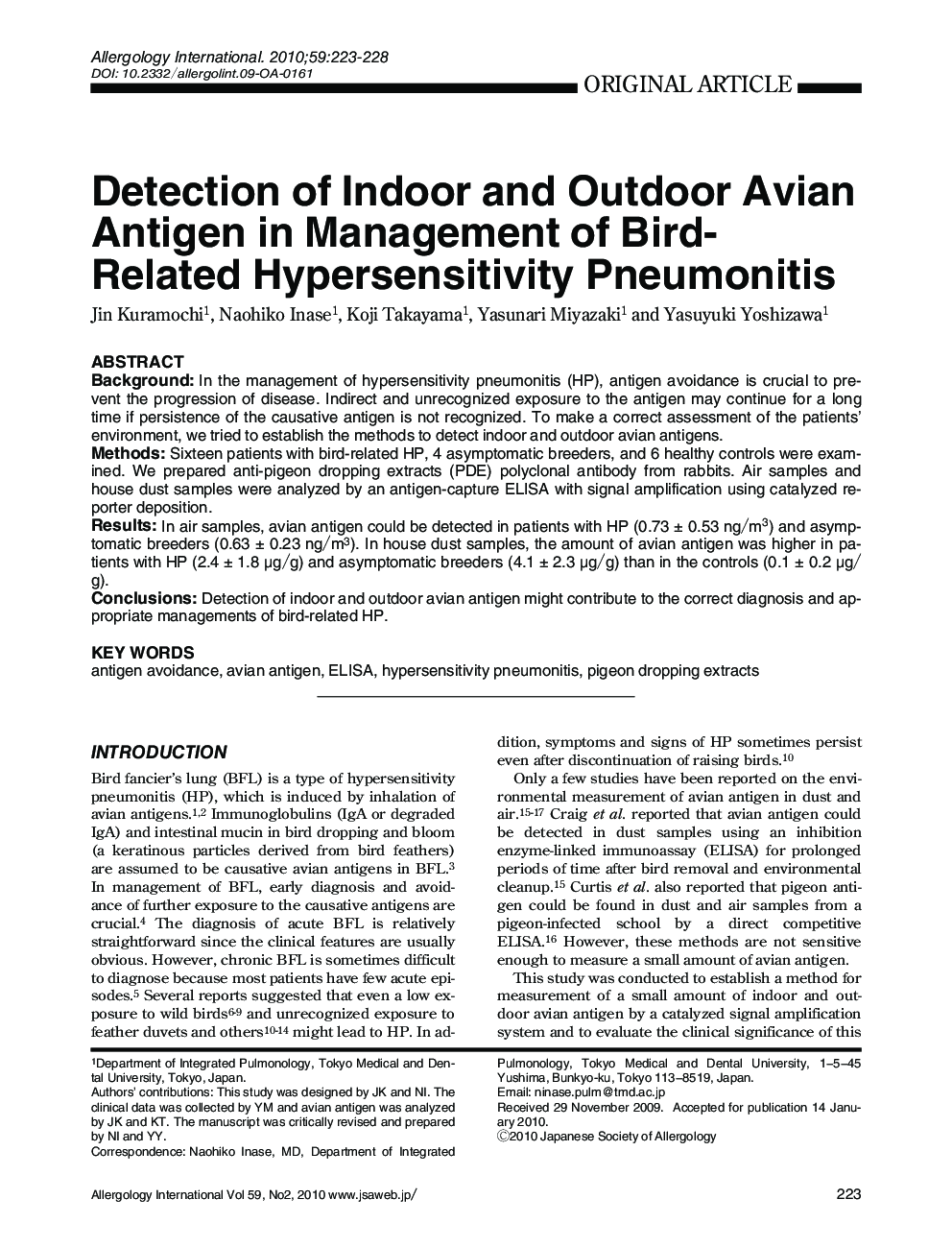| Article ID | Journal | Published Year | Pages | File Type |
|---|---|---|---|---|
| 3341050 | Allergology International | 2010 | 6 Pages |
ABSTRACTBackgroundIn the management of hypersensitivity pneumonitis (HP), antigen avoidance is crucial to prevent the progression of disease. Indirect and unrecognized exposure to the antigen may continue for a long time if persistence of the causative antigen is not recognized. To make a correct assessment of the patients' environment, we tried to establish the methods to detect indoor and outdoor avian antigens.MethodsSixteen patients with bird-related HP, 4 asymptomatic breeders, and 6 healthy controls were examined. We prepared anti-pigeon dropping extracts (PDE) polyclonal antibody from rabbits. Air samples and house dust samples were analyzed by an antigen-capture ELISA with signal amplification using catalyzed reporter deposition.ResultsIn air samples, avian antigen could be detected in patients with HP (0.73 ± 0.53 ng/m3) and asymptomatic breeders (0.63 ± 0.23 ng/m3). In house dust samples, the amount of avian antigen was higher in patients with HP (2.4 ± 1.8 μg/g) and asymptomatic breeders (4.1 ± 2.3 μg/g) than in the controls (0.1 ± 0.2 μg/g).ConclusionsDetection of indoor and outdoor avian antigen might contribute to the correct diagnosis and appropriate managements of bird-related HP.
